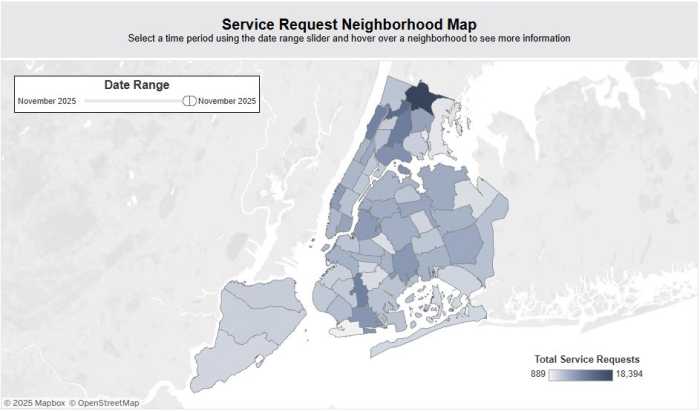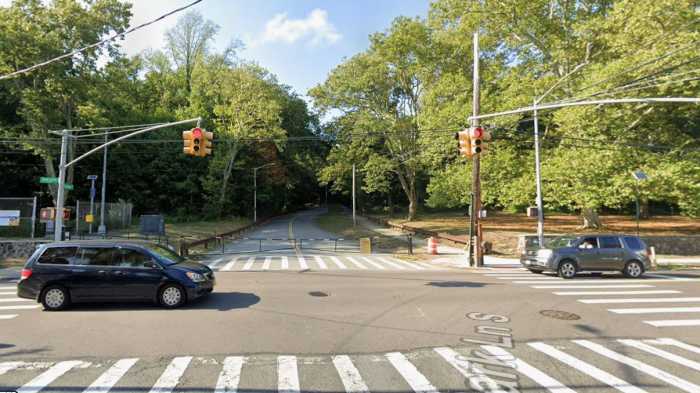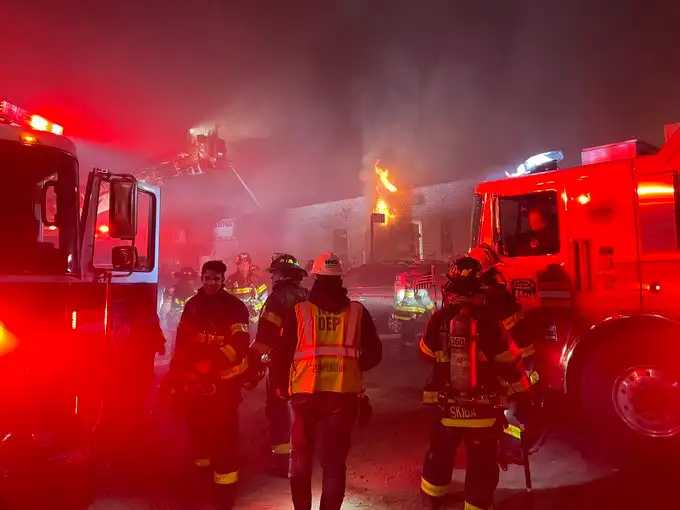Not everyone in Glendale is buying into a proposed light rail line through the area.
As the feasibility study continues into the plan to bring commuter service back to the Long Island Rail Road’s (LIRR) Lower Montauk Line, some local residents at a May 16 meeting on the plan said they weren’t sure if it would work, or the potential impact on the communities it would serve.
Tuesday’s meeting at The Shops at Atlas Park doubled as a public workshop outlining the progress made so far on the $500,000 feasibility study for the “QNS Light Rail” plan that Councilwoman Elizabeth Crowley first proposed. (Editor’s note: Despite the name, this website is not affiliated with this plan at all.)
The aim of the light rail plan is to bring expanded commuter options to areas of the borough between Jamaica and Long Island City that are “transportation deserts.” By having another rail alternative, Crowley suggested, residents would be less dependent on cars, can get around Queens easier and faster, and can create job growth in otherwise hard-to-access areas.
“Queens does not have its fair share of public transportation,” Crowley told the more than 50 residents at the workshop. “And because of that we have far too many cars on our streets. I believe this would make our borough healthier. It would take cars off the street, and would give people a better opportunity to get to work, to get to school, or wherever it is that they’re going in a shorter amount of time.”
Greg Guarino, a resident of Glendale, believes the fact that areas like Glendale are more difficult to get to by public transportation gives them the quaint charm that they currently have. By bringing a light rail system through the neighborhood, Guarino fears, would change the character of the area.
“Whenever I hear the words ‘transportation desert,’ I think it’s important to realize that transportation deserts are part of what makes these neighborhoods what they are,” he said. “Transit-rich areas are also more congested. The fact that we have a quiet, relatively un-congested neighborhood is partly because it is a transportation desert.”
Guarino, whose backyard abuts the Lower Montauk Line, also raised concerns over noise levels if the light rail plan comes to fruition.
Aaron Sugiura, director of transit policy and planning with the city Department of Transportation (DOT), said that they are looking into using diesel multiple unit (DMU) vehicles for the light rail service. DMU cars are self-propelled cars, eliminating the need for a locomotive or electrification of the tracks, compliant with Federal Railroad Administration (FRA) regulations, and have smaller vehicles which lowers the air and noise pollution.
Crowley compared the noise levels of DMU cars to that of a city bus.
Another resident from Glendale was concerned over safety issues that may arise at the 11 locations where the tracks are at-grade, which would cause problems for not only other vehicles trying to use the road, but for pedestrians of the areas as well.
The feasibility study will look at traffic patterns and figure out how to safely allow all modes of transportation to operate at the at-grade locations.
The DOT and AECOM, an engineering, design, construction and management firm that is conducting the study, are also looking at several new station locations along the Lower Montauk Line including potential stops at Woodhaven Boulevard, 80th Street, the Metro Mall, Fresh Pond Road, Grand Avenue/Flushing Avenue, and others that would provide riders with transfer options to a slew of other trains and buses.
While other residents raised issue with the location of potential stops, fare prices, and other operational facets of the light rail system, DOT and AECOM reiterated that fact that they are only half way done with their study and nothing is finalized as of yet.
They hope to have the study completed by the fall, when they will bring their findings back to the neighborhood.





































